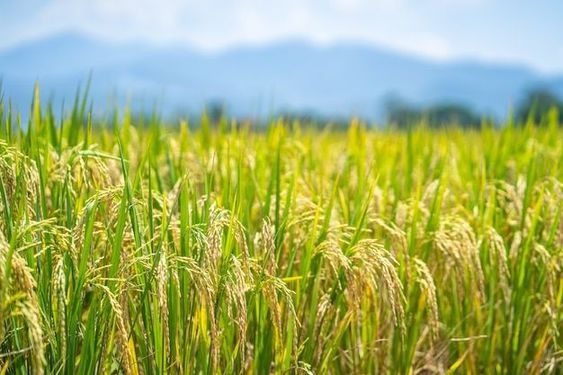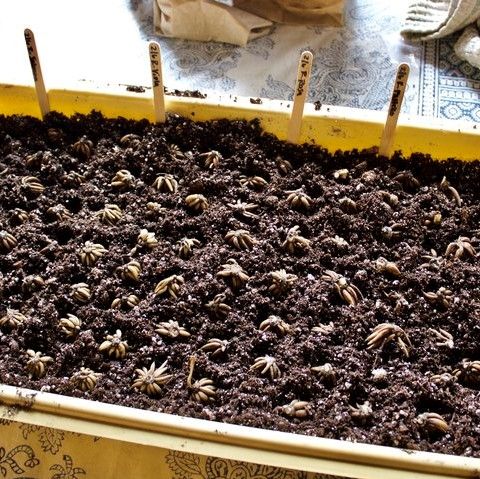Pest Resistant Plants: A Cornerstone of Smart Agriculture
Pest Resistant Plants, agricultural sector stands at a crossroads, grappling with the twin challenges of feeding a burgeoning global population and mitigating the adverse impacts of climate change. At the heart of these challenges lies the persistent threat of pests, which can decimate crops, reduce yields, and compromise food security. The integration of technology into agriculture, often termed ‘Smart Agriculture’ or ‘Digital Farming,’ has emerged as a promising avenue to address these issues. A critical component of this transformation is the development and deployment of pest-resistant plant varieties. This article delves into the concept of pest-resistant plants, their role in Smart Agriculture, and the potential benefits they offer to the agricultural sector.
Contents
Pest Resistant Plants
Pest Resistant Plants refers to the inherent or acquired ability of plants to withstand or repel attacks from pests, such as insects, diseases, and weeds. This trait can be conferred through natural selection, genetic engineering, or conventional breeding methods. Pest-resistant plants play a pivotal role in sustainable agriculture by reducing reliance on chemical pesticides, which can harm beneficial organisms, contaminate the environment, and pose health risks to humans.
Pest Resistant Plants in the Context of Smart Agriculture
Pest Resistant Plants Smart Agriculture, characterized by the application of digital technologies and data-driven decision-making, offers a robust framework for harnessing the potential of pest-resistant plants. By integrating these two domains, farmers can achieve unprecedented levels of crop protection, yield enhancement, and resource efficiency.
- Precision Agriculture: Smart farming technologies, such as drones, sensors, and satellite imagery, enable precise monitoring of crop health and pest infestations. By identifying pest hotspots early on, farmers can deploy pest-resistant varieties strategically, optimizing their use and maximizing their impact.
- Data-Driven Breeding: Advanced data analytics and machine learning algorithms can accelerate the development of new pest-resistant cultivars. By analyzing vast amounts of genetic and phenotypic data, breeders can identify genes associated with pest resistance and introduce them into desirable crop varieties.
- Integrated Pest Management (IPM): Pest-resistant plants form a crucial component of IPM strategies. By combining biological, cultural, and physical control measures with resistant varieties, farmers can create a multifaceted approach to pest management, reducing the need for chemical interventions.
- Climate Resilience: Many pests thrive in specific climatic conditions. Pest-resistant plants can contribute to building climate-resilient agricultural systems by conferring resistance to pests that are likely to become more prevalent under changing climatic scenarios.
Benefits of Pest Resistant Plants
Pest Resistant Plants,The adoption of pest-resistant plants offers a multitude of benefits to farmers, consumers, and the environment:
- Increased Yield and Quality: By reducing crop losses due to pests, pest-resistant plants can significantly enhance yields and improve crop quality.
- Reduced Pesticide Use: Decreased reliance on chemical pesticides leads to lower production costs, reduced environmental pollution, and improved food safety.
- Enhanced Farm Profitability: By mitigating pest damage and optimizing resource use, pest-resistant plants can contribute to increased farm profitability.
- Improved Food Security: By safeguarding crop production from pest threats, pest-resistant plants can help ensure food security for growing populations.
- Environmental Protection: Reduced pesticide use and the conservation of natural enemies through IPM practices contribute to a healthier environment.
Challenges and Opportunities
Pest Resistant Plants,While the potential benefits of pest-resistant plants are substantial, several challenges must be addressed to maximize their impact:
- Development of Durable Resistance: Pests can evolve resistance to specific plant traits, necessitating the continuous development of new resistant varieties.
- Public Perception: Addressing concerns about genetically modified organisms (GMOs) is essential for the widespread adoption of genetically engineered pest-resistant crops.
- Integration with Other Agricultural Practices: Pest-resistant plants should be integrated into broader agricultural systems, including crop rotation, soil health management, and biodiversity conservation.
Despite these challenges, the development and deployment of pest-resistant plants represent a significant opportunity to transform agriculture into a more sustainable, resilient, and productive system. By leveraging the power of technology and adopting innovative approaches, we can harness the full potential of these valuable genetic resources.
Mechanisms of Pest Resistance
Pest Resistant Plants have evolved a variety of mechanisms to defend themselves against pests. These can be broadly categorized as:
- Physical Defenses: These include structural barriers like thick leaves, tough stems, and waxy cuticles that make it difficult for pests to penetrate.
- Chemical Defenses: Plants produce a wide range of chemical compounds that deter or kill pests. These compounds can act as repellents, toxins, or disruptors of insect physiology.
- Induced Resistance: Some plants can activate defense mechanisms in response to pest attack, leading to increased resistance in subsequent attacks.
Genetic Engineering for Pest Resistance
Pest Resistant Plants,Genetic engineering has emerged as a powerful tool for developing pest-resistant plants. By introducing specific genes into a crop’s genome, scientists can confer resistance to a wide range of pests. Some common approaches include:
- Bt Crops: These crops contain a gene from the Bacillus thuringiensis bacterium, which produces a protein toxic to certain insect pests.
- RNA Interference (RNAi): This technology involves introducing small RNA molecules that interfere with the expression of essential genes in pests, leading to their death.
- Gene Stacking: Combining multiple resistance genes into a single plant can provide broader and more durable protection against pests.
Conventional Breeding for Pest Resistance methods, such as cross-pollination and selection, have been used for centuries to develop pest-resistant varieties. While this process can be time-consuming, it has led to the development of many valuable crop cultivars.
Successful Pest Resistance Programs
Pest Resistant Plants,Several successful pest resistance programs have demonstrated the effectiveness of these approaches:
- Bt Cotton in India: The adoption of Bt cotton has significantly reduced the use of insecticides and increased farmer incomes.
- Disease-Resistant Wheat Varieties: Breeding programs have developed wheat varieties resistant to rust and other fungal diseases.
- Nematode-Resistant Soybeans: The introduction of soybean varieties with resistance to soybean cyst nematode has reduced yield losses.
The Role of Smart Agriculture in Pest Resistance
Pest Resistant Plants Smart agriculture technologies can enhance the development and deployment of pest-resistant plants in several ways:
- Phenotyping: High-throughput phenotyping platforms can rapidly assess plant traits related to pest resistance, accelerating breeding programs.
- Genotyping: Advanced genotyping techniques can identify genes associated with pest resistance, facilitating marker-assisted selection.
- Modeling and Simulation: Computer models can simulate the interaction between pests, plants, and the environment, helping to optimize pest management strategies.
Challenges and Future Directions
Pest Resistant Plants,While significant progress has been made in developing pest-resistant plants, several challenges remain:
- Emergence of New Pests: The constant evolution of pests requires ongoing research and development of new resistance traits.
- Public Acceptance: Addressing public concerns about genetically modified organisms is crucial for the widespread adoption of biotech crops.
- Integration with Sustainable Agriculture: Pest-resistant plants should be developed within the context of sustainable agricultural systems.
Future research should focus on developing more durable and broad-spectrum resistance traits, improving our understanding of pest-plant interactions, and promoting the adoption of pest-resistant plants through effective extension programs.




